This post may contain affiliate links, from which we earn an income. Click here to read our affiliate policy.
Are you craving a taste of authentic Germany? Look no further than the Black Forest, in the country’s southwest corner. Here, natural beauty and historic intrigue intertwine, offering a captivating experience amongst mountains and forests.
Unwind amidst the tranquility of the Black Forest National Park and Baden-Baden, wander the charming streets of medieval villages and towns, and marvel at fairy tale castles. Explore scenic wine roads, family adventures and outdoor activities in breathtaking natural landscapes.
The Black Forest offers a unique blend of natural wonders, historical treasures, and exciting experiences. Use our Black Forest guide to plan your perfect trip and discover the captivating charm of this unforgettable German region.
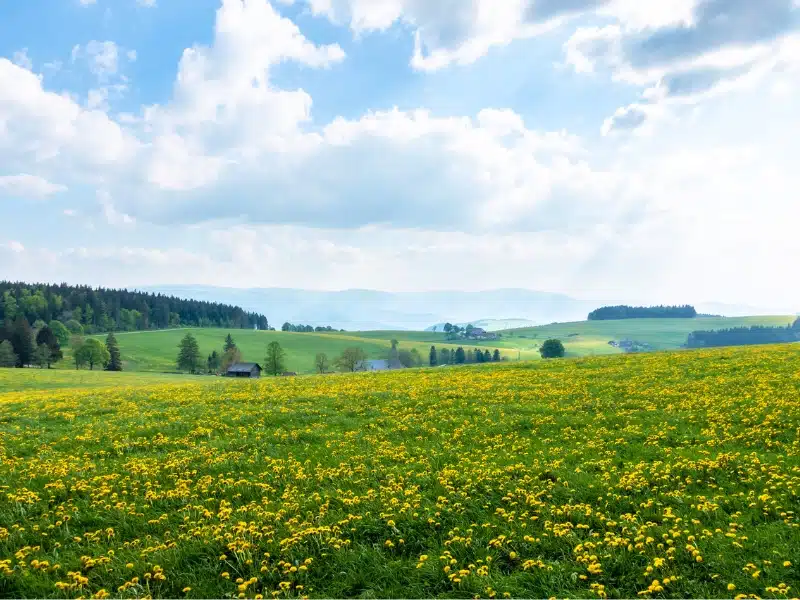
Exploring the Black Forest
The area of the Black Forest in Baden-Wurttemberg is more than 16,000 square kilometers and encompasses the Black Forest National Park. The mountain massif runs along the course of the Rhine River and is mostly covered with coniferous forests. There are many picturesque mountain peaks, lakes, waterfalls, thermal springs, and picturesque small towns and villages to discover.
The name ‘Black Forest’ has a literal meaning – the coniferous forests have a deep blue-black color here. But don’t let the legends of beasts and witches put you off exploring the area as it is very tourist-friendly.
The local forests have well-managed hiking paths, lots of pretty towns and villages, interesting and exciting attractions like rodelbahn (dry summer toboggan runs which are great fun), cuckoo clock shops and there is even a famous road, the Black Forest High Road or Schwarzwaldhochstrasse.
Whether you’re driving or using public transportation to get around, the Schwarzwald Konus Card provides free train and bus tickets and entry to over 200 adventure attractions.
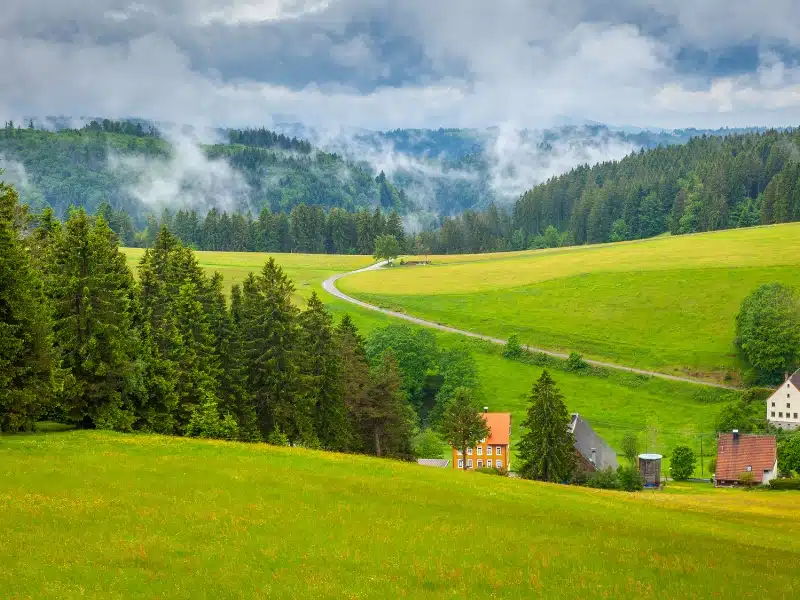
Is this your first time visiting Germany? Get all the information you need in our Germany Travel Guide, including what to pack, the best time of year to go, getting there and practical tips to help you have the best trip!
Black Forest Towns
Freiburg im Breisgau
Freiburg im Breisgau, often simply known as Freiburg, is a vibrant university city known as the capital of the Black Forest.
Established in the 12th century, Freiburg boasts medieval architecture, including the stunning Freiburg Minster with its distinctive Gothic spire, charming cobblestone streets, traditional markets, and curious narrow canals known as bächle.
Visitors can explore the Augustiner Museum, which houses an impressive collection of art and artifacts, or enjoy the lively atmosphere of the city’s many cafés and restaurants.
Baden-Baden
Baden-Baden, a renowned spa town on the northern edge of the forest, has been celebrated for its thermal baths since Roman times. The town’s elegant architecture and lush parks reflect its status as a premier destination for relaxation and wellness.
Key attractions include the traditional Friedrichsbad and Caracalla Spa, offering visitors the chance to experience the healing waters that have drawn visitors for centuries.
The town is also home to the Festspielhaus, one of Europe’s largest opera and concert houses, and the historic Kurhaus with its grand casino.
Triberg
Triberg is a small town best known for the Triberg Waterfalls, one of Germany’s highest waterfalls. You could easily spend a day exploring Triberg, which is steeped in tradition and famous for its cuckoo clocks.
One of the must-do things in Triberg is to sample Black Forest cake, a rich chocolate and cream cake with a delicious cherry filling. All the cafés in town serve the famous gateau and pride themselves on the authenticity of their recipes.
The Black Forest Open Air Museum offers insights into the region’s cultural heritage, showcasing everything from traditional crafts to historic farming equipment.
Visitors can explore the picturesque trails around the waterfalls, visit local clock shops, and even see the world’s largest cuckoo clock. Triberg is a lively town that encapsulates the essence of the Black Forest’s natural beauty and cultural richness.
Freudenstadt
Freudenstadt, founded in the early 17th century, is known for having the largest market square in Germany, surrounded by beautiful arcaded houses. The town’s layout, designed by architect Heinrich Schickhardt, is unique and includes a distinctive grid pattern.
Freudenstadt is a popular destination if you love both history and outdoor adventure. Visitors can stroll through the extensive market square, explore the town’s historic churches, hike and bike in the surrounding forest or take in the panoramic views from the Friedrichsturm tower.
Calw
Calw, located in the northern Black Forest, is a picturesque town known for its well-preserved medieval architecture and as the birthplace of the famous author Hermann Hesse.
The town’s history dates back to the 11th century, and its charming half-timbered houses line the banks of the Nagold River. Visitors can explore the Hermann Hesse Museum, which celebrates the life and works of the Nobel Prize-winning author, or wander through the historic marketplace.
Bad Wildberg
Bad Wildberg, a historic Roman spa town in the northern Black Forest, is renowned for its therapeutic thermal springs and picturesque landscapes.
Highlights include the town’s revitalizing thermal baths at Palais Thermal, an opulent 19th-century spa complex; the historic old town, characterized by half-timbered houses and narrow streets; the Kurpark, a beautifully landscaped spa garden; and the unique treetop walk of the Black Forest.
RELATED POST: Beautiful Cities in Germany: 27 Picturesque Cities to Visit
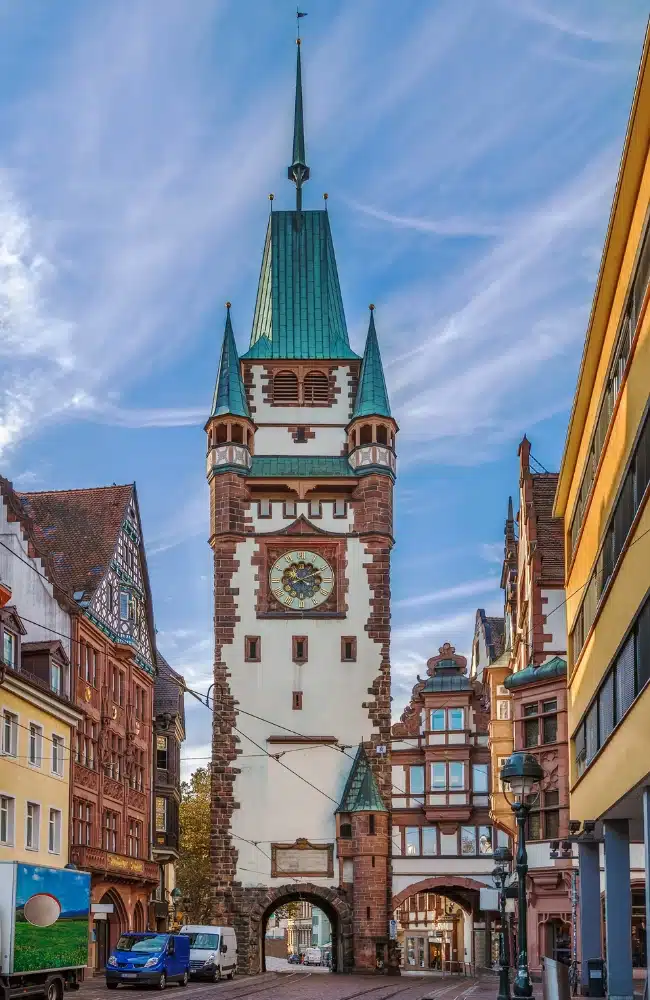
Make sure you have travel insurance you can trust when visiting Germany. We recommend True Traveller for their 5-star TrustPilot reviews, variety of cover options, best activities cover as standard, great prices, and excellent service.
Hiking in the Black Forest
Many of the Black Forest’s most popular peaks are serviced by cable cars, meaning everyone can get close to the top and find a walk or hike to suit their fitness and ability.
Away from the popular towns, there are literally tracks and trails everywhere. From the long distance Gorge Trail or Schluchtensteig, and themed foodie hikes to lake walks and local walks from villages and car parks along popular tourist routes, there’s a hike in the Black Forest for everyone!
Mount Merkur
In the suburbs of Baden-Baden, the Merkur funicular railway ascends 668 meters high to the summit of Mount Merkur, which offers picturesque views not only of the town but also of the local countryside.
Once there, you can climb the 23-metre-high viewing platform, grab a coffee, enjoy the sunbathing area, and follow the hiking and walking trails.
Mount Turmberg
In the surroundings of Karlsruhe is Mount Turmberg, and the Turmbergbahn, another funicular railway, allows for easy access. This is the northernmost mountain point of the Black Forest Natural Park, although, at only 256 meters in altitude, it’s more of a hill than a mountain!
On fine days, you can see the neighboring French Alsace region from the top. You can also visit the ruins of the castle and explore the local cycling and walking tracks and trails.
Heidelberg’s Mountains
Although not quite in the black forest, the beautiful city of Heidelberg is well worth a day trip to see Heideblebrg Castle, the River Neker, and the mountain peaks that rise directly above the city.
Mount Heiligenberg, the Holy Mountain, and Mount Konigstuhl, the King’s Seat, are partly connected by the Philosopher’s Way, a 3.1km circular trail and the funicular railway that runs from Molkenkur and also connects the trail to the castle.
Freiburg’s Mountains
In Freiburg you can hike the Schlossberg, Rohskopf, and Schaunisland mountains; cable cars and funiculars operate here for the ascent.
Feldberg is the Black Forest’s highest mountain and the highest in Germany outside of the Alps and Bavaria, at 1493 meters above sea level. You can take the cableway from Seebuck almost to the summit and then climb the Feldberg Tower for spectacular views.
Once at the top, there are plenty of walking and cycling routes through the mountain pastures and to Feldsee, passing rustic huts where you can stop for a drink or meal. Your may even find a getränkestation, a remote self-service area along a hiking trail stocked cool boxes stocked with cold water, soft drinks and even beer! Ther’s an honesty box for payment and comfy seats to enjoy the view – only in Germany!

Looking for the best SIM card deals in Europe for your trip? Check out our guide to the best data SIMs in Europe and get the best deal for your trip to Germany.
Lakes of the Black Forest
Bodensee
Most of the region’s small and picturesque mountain lakes are found inside the Black Forest National Park. But there is also a lake, the largest in the region, that is not surrounded by mountains.
This is Bodensee, also known as Lake Constance. The area of Lake Constance reaches more than 500 square kilometers and is located across the regions of Baden-Wurttemberg and Bavaria, as well as the three countries of Germany, Switzerland, and Austria.
Geographically, the lake is divided into Lower and Upper, and in its waters, you can find several islands, the most significant of which are Reichenau (listed as a UNESCO World Heritage Site) and the garden island called Mainau.
You can relax by the lake in one of its lively resort towns such as Konstanz, Friedrichshafen, Meersburg, or Lindau in Germany, St. Gallen in Switzerland, or Bregenz in Austria.
Lakes in the Black Forest National Park
In the Black Forest National Park, there are several picturesque mountain lakes, which are definitely worth visiting. These lakes can get very busy in the summer, so be prepared for lots of people and expensive services.
Lake Titisee
Lake Titisee, one of the most popular lakes in the region, was formed by glaciers during the last ice age. The 2km long lake is located at the foot of Mount Feldberg at 850 meters above sea level.
There is a developed resort infrastructure here and you can safely go boating, swimming, windsurfing, and sailing, or walk around it along well-maintained walking routes.
Nearby in Titisee-Neustadt is Badeparadies Schwarzwald, a tropical oasis with themed areas including Palais Vital, a traditional German wellness experience of saunas and thermal spa pools, that is textile-free. Yes, that means no swimming costumes are required!
Mummelsee
If you are looking for a more peaceful location, visit Lake Mummelsee. This is a small but very picturesque mountain lake surrounded by dense forests, located between the towns of Ruestein and Unterstmatt, along the Black Forest High Road, route 500.
You can take out a boat or pedalo, dip your toes in the water, sunbathe with a German beer (and why not, you’re on vacation!), or sample local delicacies like Schwarzwälder schinken, a smoky cured ham.
Schluchsee
Another lake of glacial origin, Schluchsee is located near the town of St. Blasien. Unlike other lakes, Schluchsee is open on all sides, and sailing is quite popular here in the summer.
Tourists coming to Schluchsee can take an 18km walk around the lake, or take a train ride with panoramic views of the Dreisebahn.
Blautopf
You can admire the turquoise water and idyllic landscapes near the town of Blaubeuren, a few kilometers from Ulm, where there is a natural spring called Blautopf that forms a small lake.
The beauty of Blautopf was largely formed due to the karst system in its area; the depth of underwater caves is up to 18 meters. Here you can see such a phenomenon as the ‘Blue Hole’, a deep underwater cave.
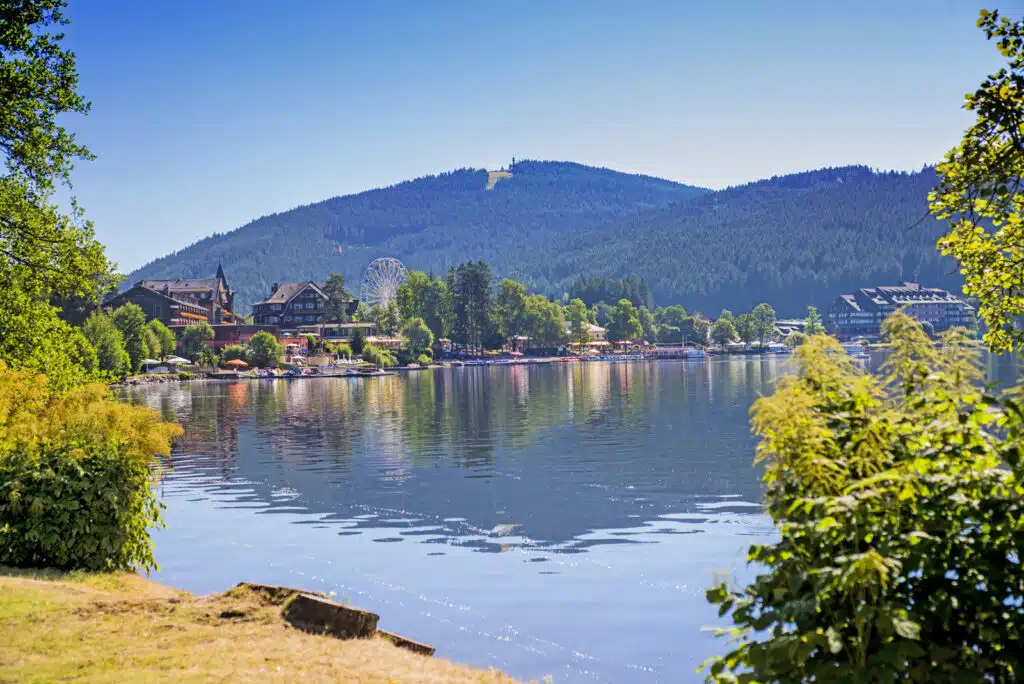
Other German Travel Ideas
Waterfalls of the Black Forest
With such a great system of mountains and lakes on its territory, it is not surprising that the Black Forest is home to over 20 picturesque waterfalls. These are our favorites:
Triberg Waterfall
Triberger Waserfalle south of Freiberg, is one of Germany’s highest and most iconic waterfalls. Located in the quaint town of Triberg, the falls boast a series of seven cascades that together drop a total of 163 meters.
The Gutach River, which feeds the falls, tumbles over granite rocks, creating a stunning natural spectacle that attracts visitors from around the world. The surrounding area is enveloped by dense forests, adding to the atmosphere and providing numerous hiking trails for visitors to explore.
Todtnau Waterfall
Near Triberg is Todtnau Waterfall, a striking natural attraction celebrated for its impressive 97-meter drop and the cascading waters of the Stübenbach stream that descend over multiple tiers.
The surrounding area is characterized by lush forest crossed by well-maintained trails that lead visitors to various vantage points, offering spectacular views of the falls.
Geroldsau Waterfall
The Geroldsau waterfall is located near Baden-Baden. The waterfall itself is relatively small and won’t impress with its heights or thundering water, but this surprisingly peaceful place in the Grobbachtal Valley will win your heart with its idyllic landscapes, blooming rhododendrons, and turquoise pond.
Zankenbach Waterfall
Zankenbach is a 40-meter-high cascade located between Baden-Baden and Offenburg. This waterfall also has several levels of cascades that lead to the mountain lake of Zankensee, and there are wooden bridges and observation decks that allow you to get as close to the waterfall as possible.
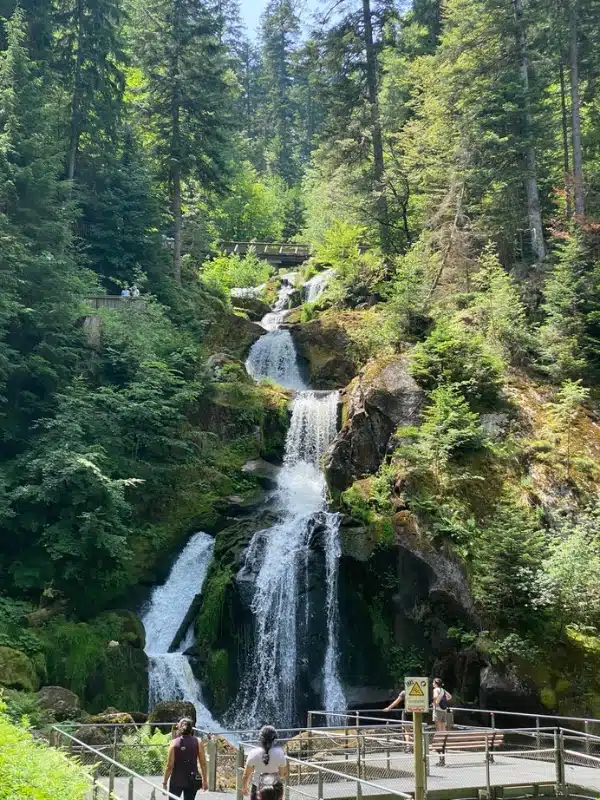
Castles of the Black Forest Region
In the wider region of Baden-Wurttemberg, there are a whopping 34 castles, known as schloss in German! Some are in ruins, others are well-preserved and have surprisingly not been damaged in the course of history, and others have been carefully restored. These are our favorites:
Weikersheim Palace
The palace and park complex in Weikersheim is recognized as one of the best examples of Renaissance architecture in southern Germany. Originally a medieval moated castle, it was transformed into a grand palace in the late 16th century by Count Wolfgang II of Hohenlohe.
The gorgeous palace is renowned for its beautifully preserved interiors, including the opulent Knights’ Hall adorned with intricate wood carvings and elaborate frescoes. Surrounding the palace, the meticulously designed Baroque gardens feature geometric patterns, ornamental fountains, and classical statues, creating a serene and picturesque landscape.
Bruchsal Palace
Schloss Bruchsal is an exquisite example of Baroque architecture and a significant cultural landmark. Built in the early 18th century, the palace is renowned for its grand staircase, designed by the renowned architect Balthasar Neumann, and its opulent interiors adorned with intricate stuccoes and frescoes.
The palace complex also includes beautifully landscaped gardens and several outbuildings that enhance its historic charm, as well as a museum that showcases the history and art of the region.
Sigmaringen Castle
Sigmaringen Castle, rising majestically above its namesake town, is a striking fortress with roots dating back to the medieval era. Originally built in the 11th century, the castle has been extensively renovated and expanded over the centuries, resulting in a captivating blend of architectural styles.
Once the seat of the noble Hohenzollern family, it is renowned for its impressive facade, richly decorated interiors, and extensive art collections. The castle’s strategic location on a cliff overlooking the Danube River adds to its dramatic allure, offering breathtaking views of the surrounding landscape.
Hohenzollern Castle
Burg Hohenzollern, an iconic symbol of German history and architecture, majestically crowns the peak of Mount Hohenzollern in Baden-Württemberg. This stunning fortress, with its origins tracing back to the 11th century, is the ancestral seat of the Hohenzollern family, which played a pivotal role in German and European history.
The current structure, a 19th-century reconstruction in the neo-Gothic style, features towering spires, vast defensive walls, intricately decorated interiors, and a large collection of art and historical artifacts, reflects the grandeur of its history.
RELATED POST: 18 Magical Castles in Germany to Add to Your Bucket List
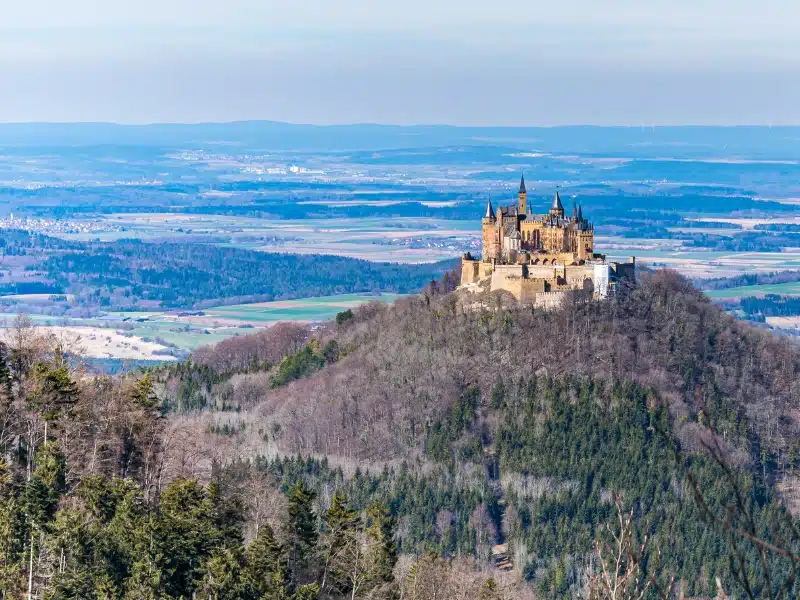
Looking for Europe more travel inspiration? Check out these top posts…
16 of the Best Travel Destinations in January
Our 60 Before 60 Travel Bucket List
The 16 Best Second Cities in Europe You Shouldn’t Miss
Adventure Travel Bucket List: 15 Epic Experiences in Europe
Travel Trends 2026: The Year of Mindful Escapes and Meaningful Journeys
The Ultimate Europe Travel Bucket List: 15 Classic Experiences to Inspire Your Next Trip
Love it? Pin it!
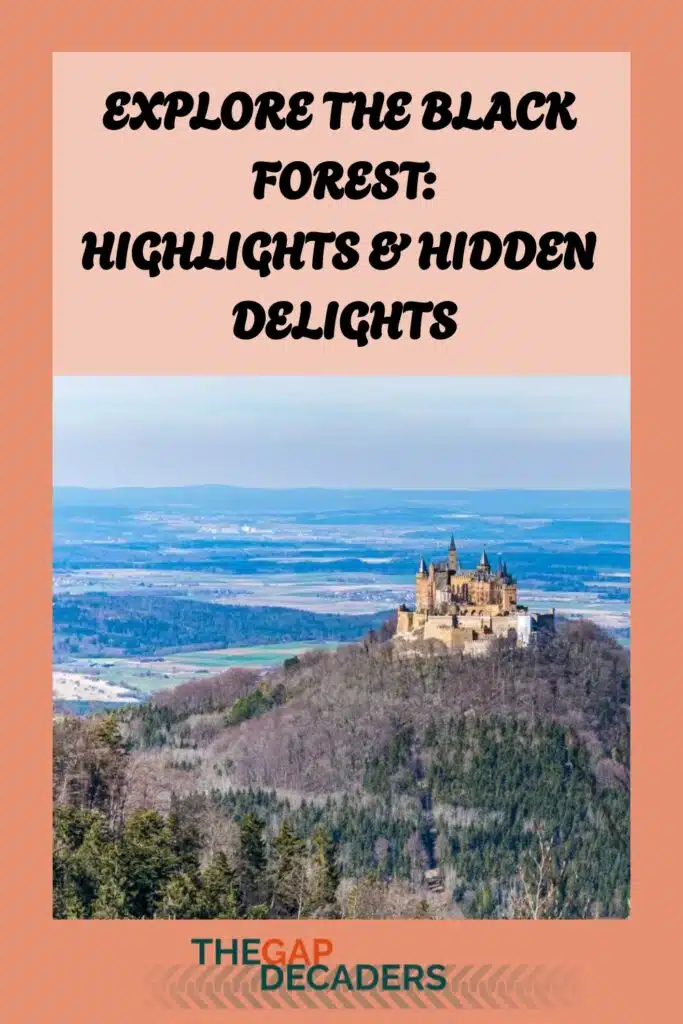
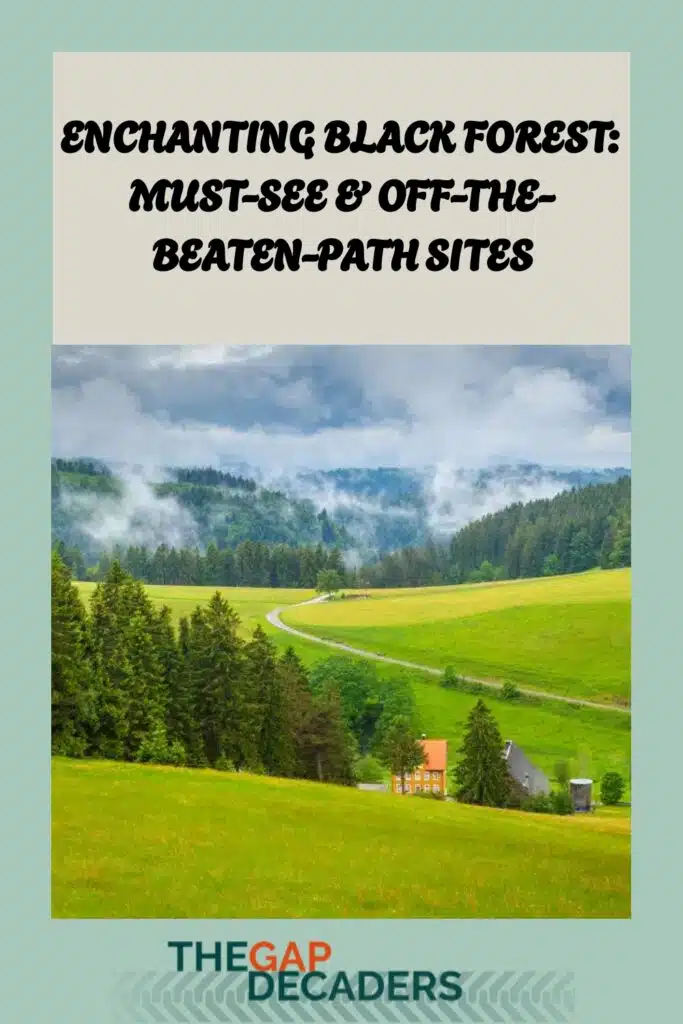

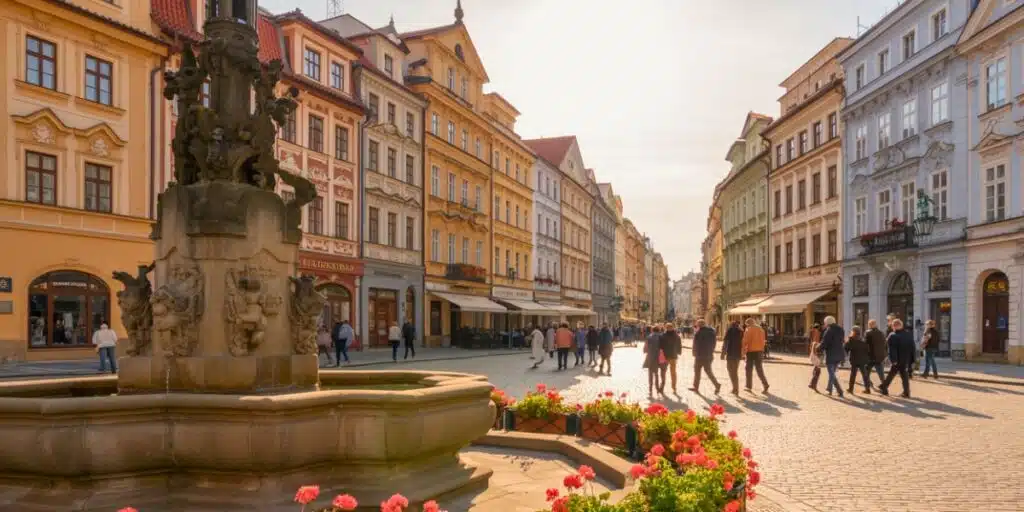
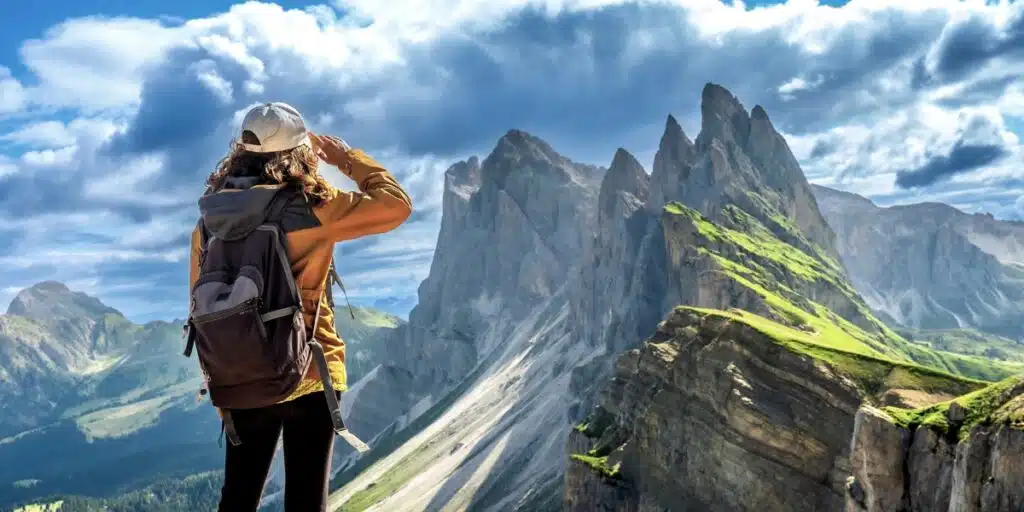

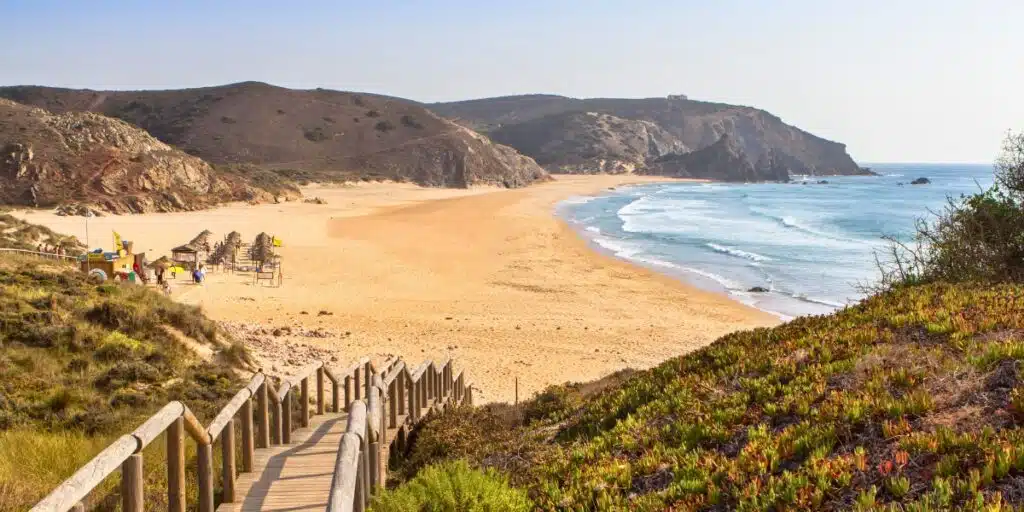
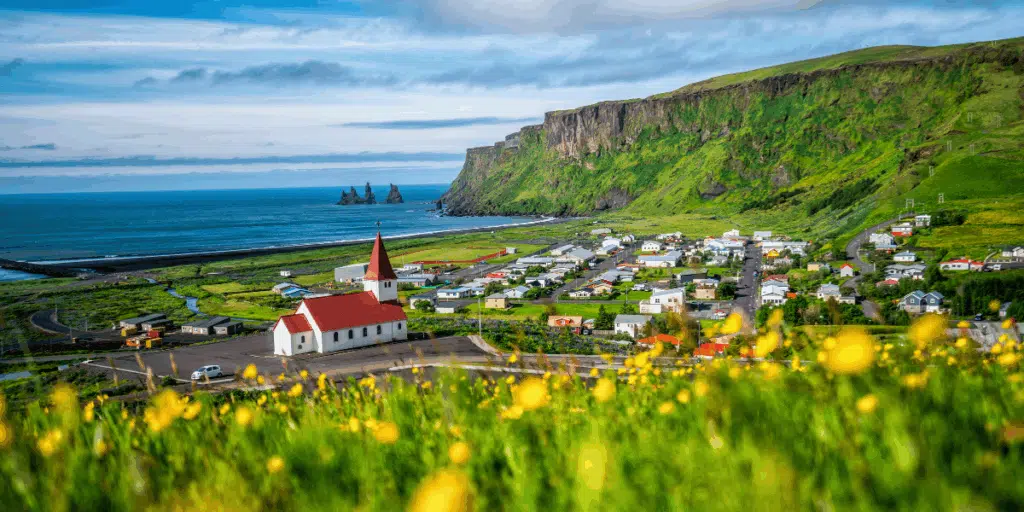
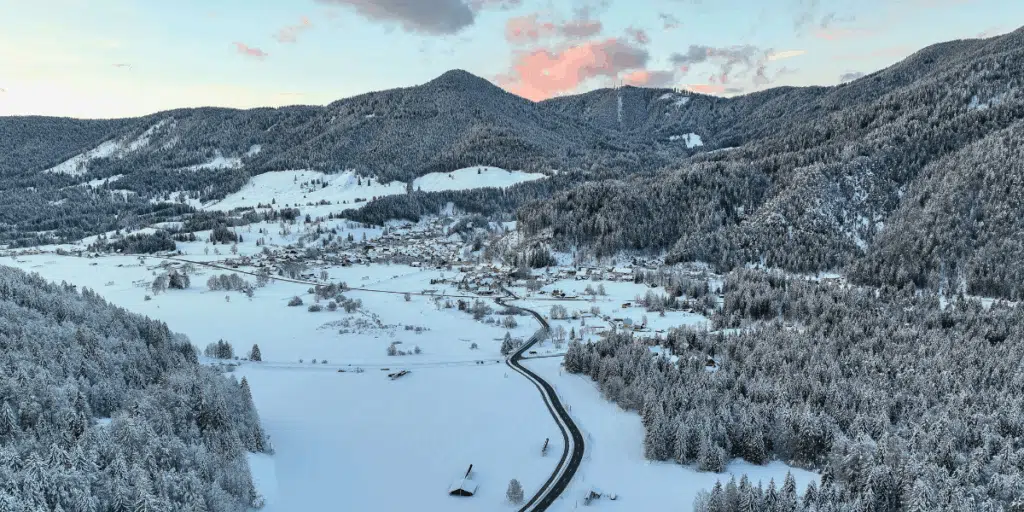

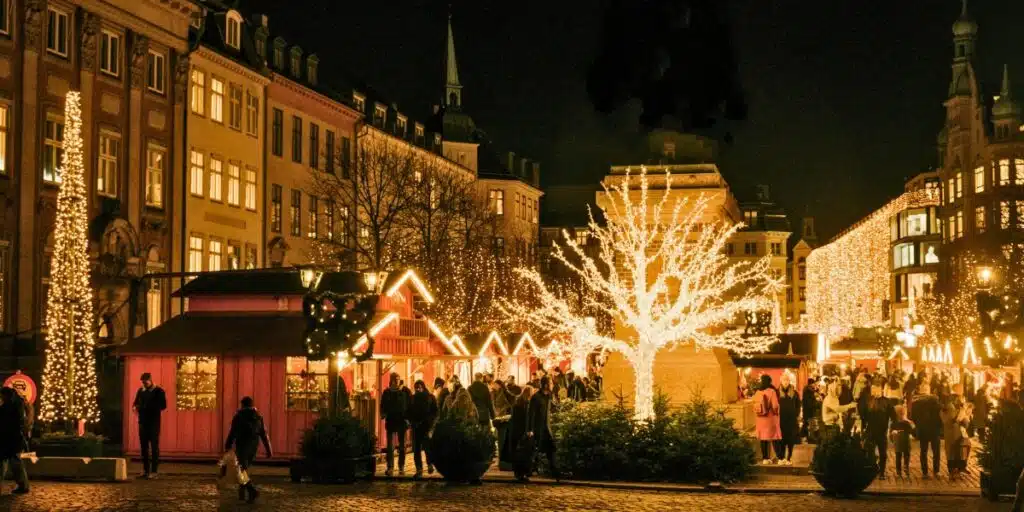

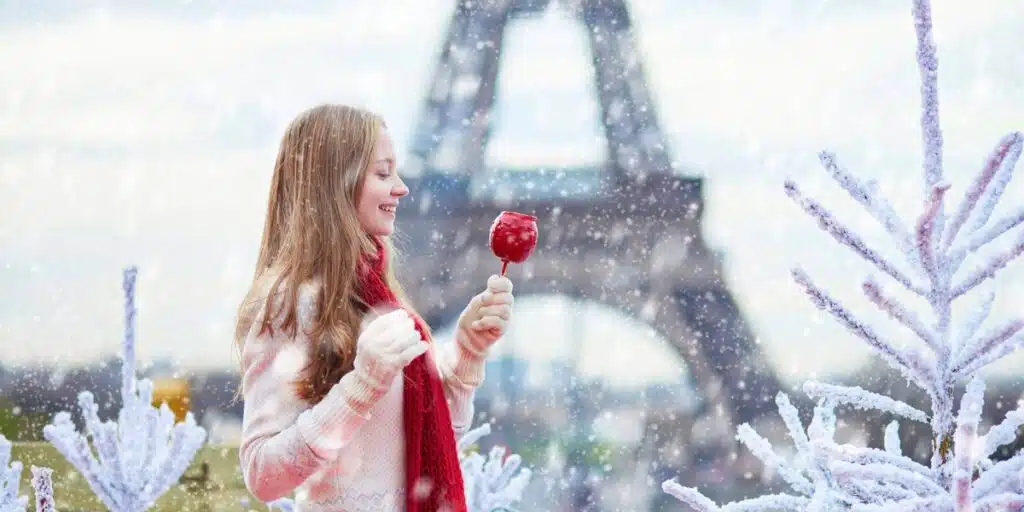
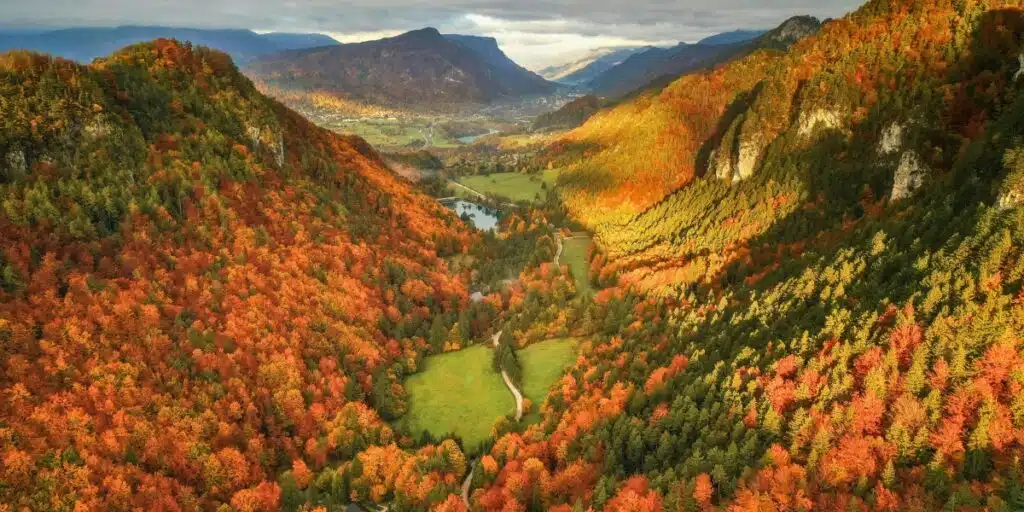
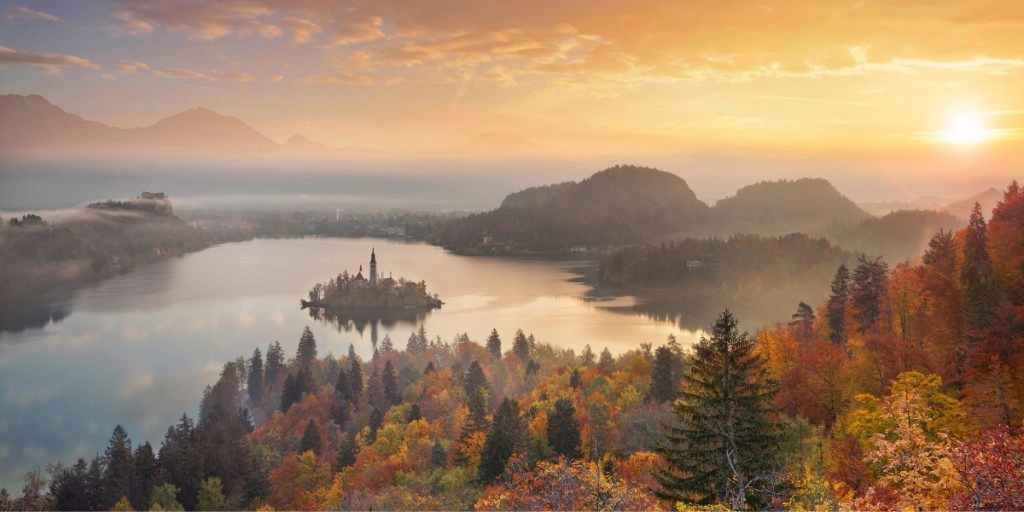
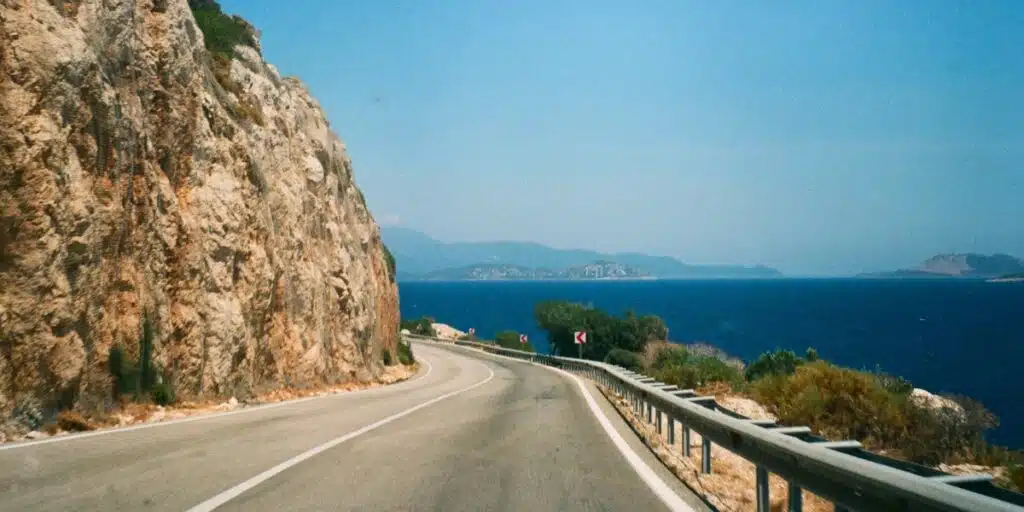
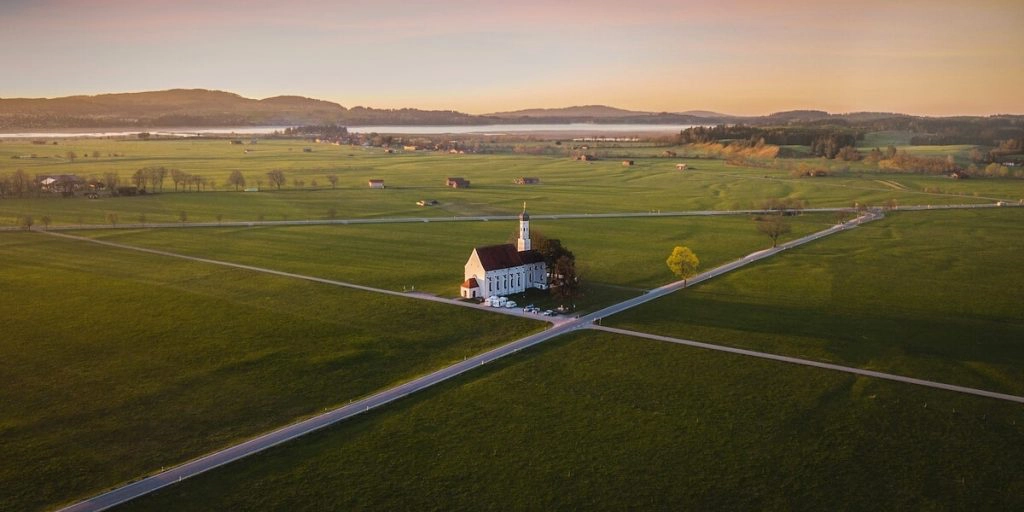
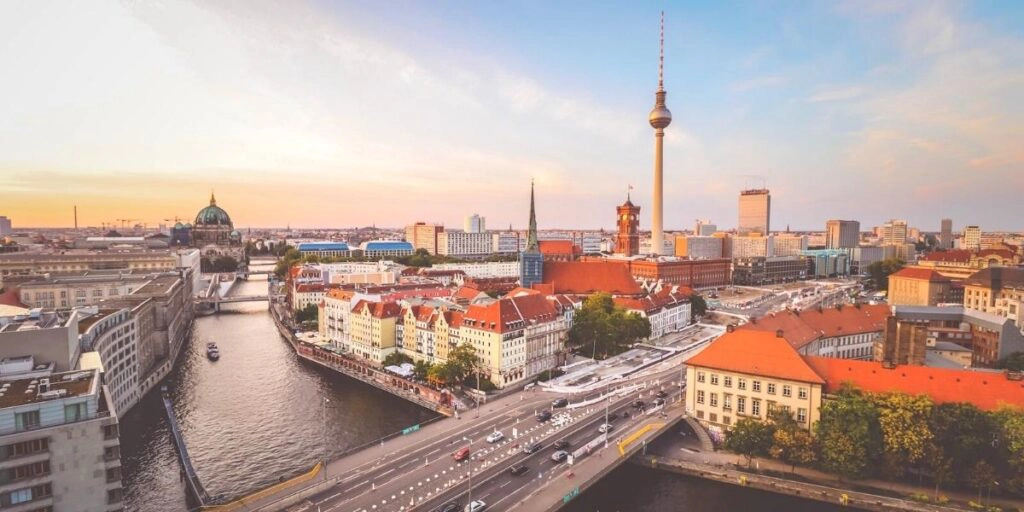
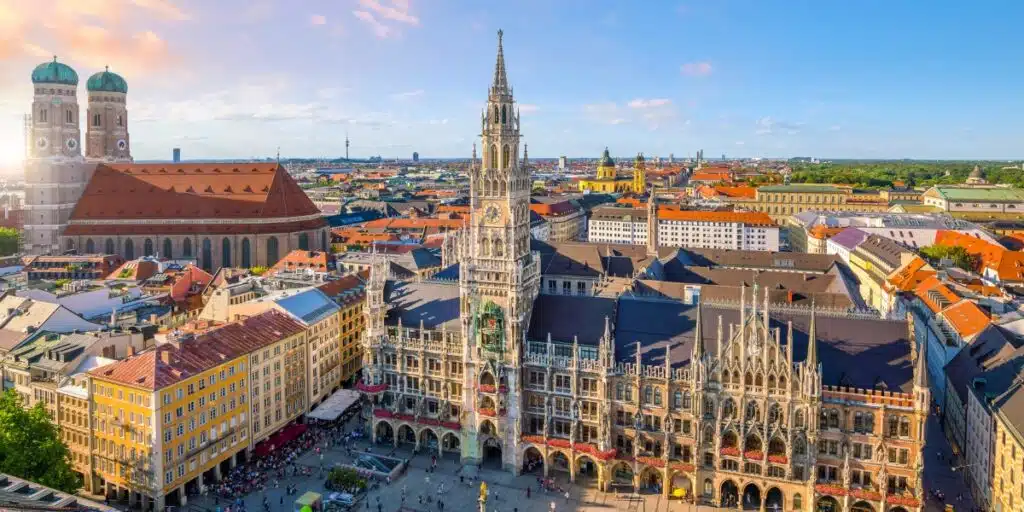
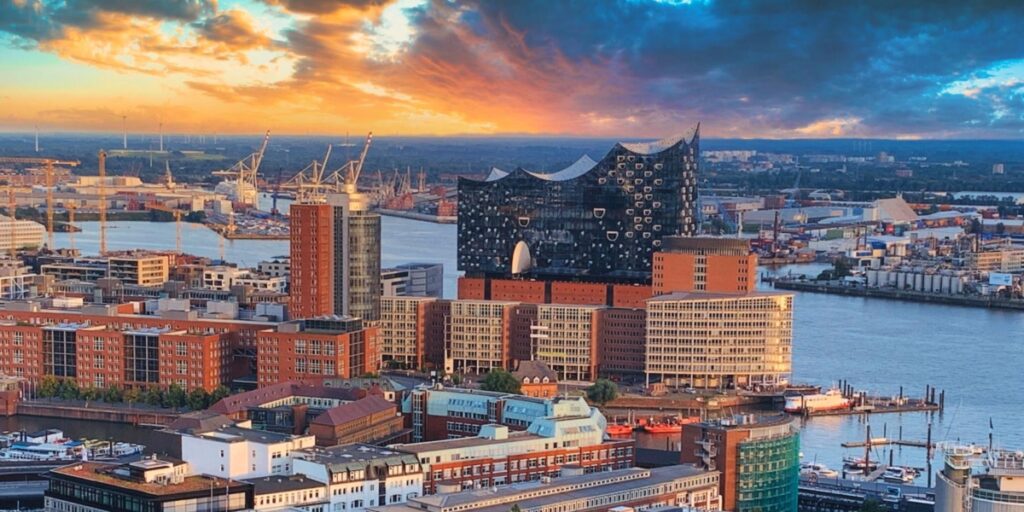
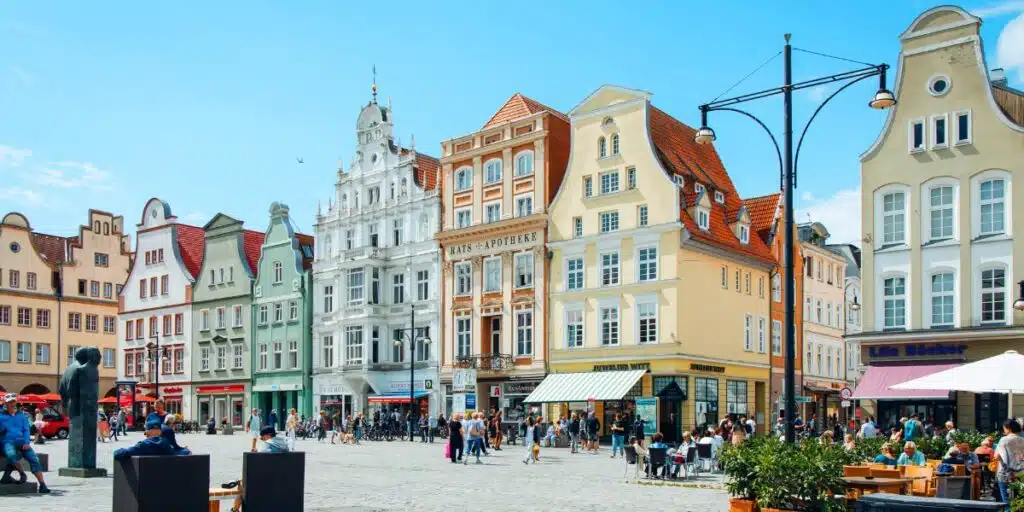
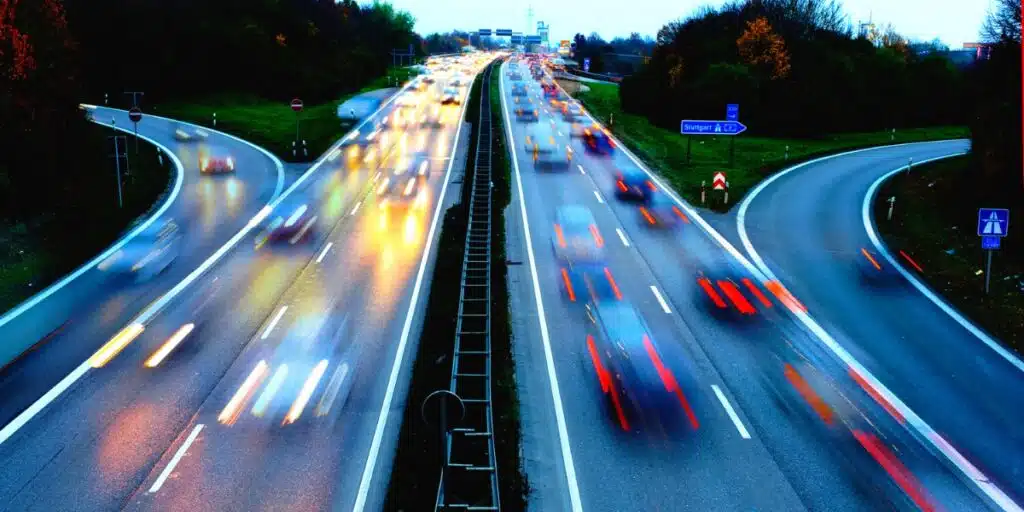
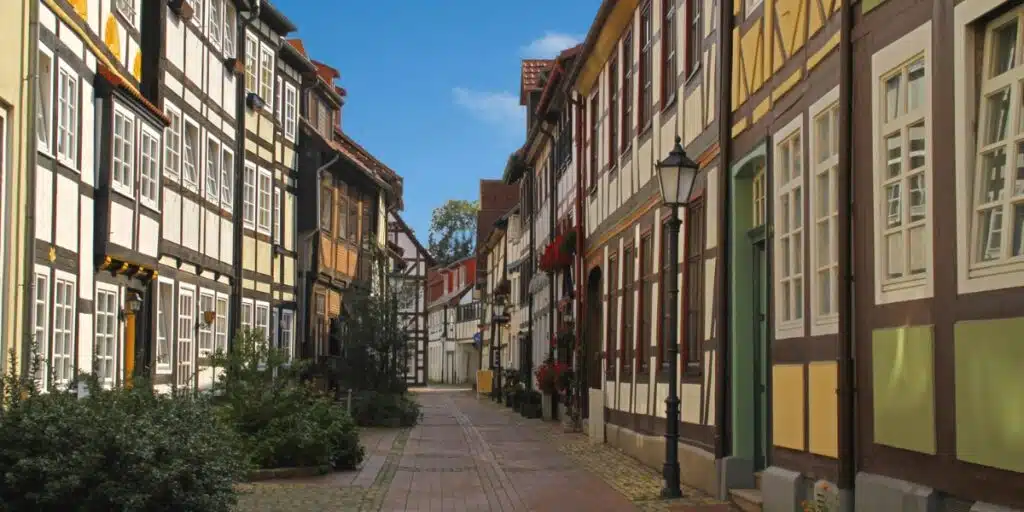
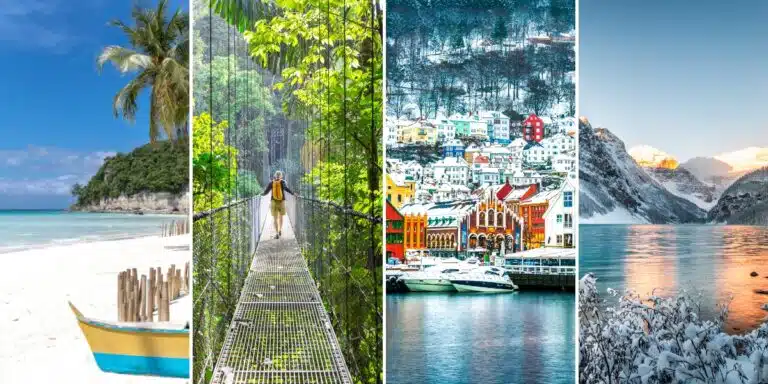
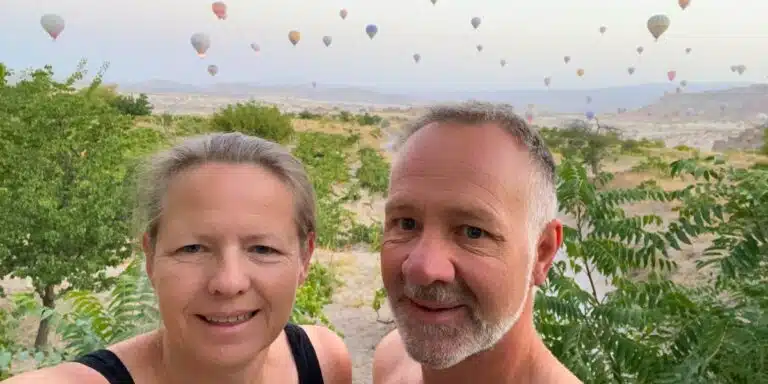
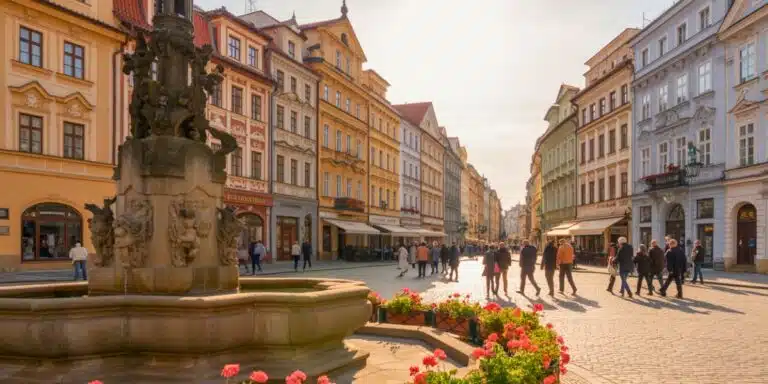
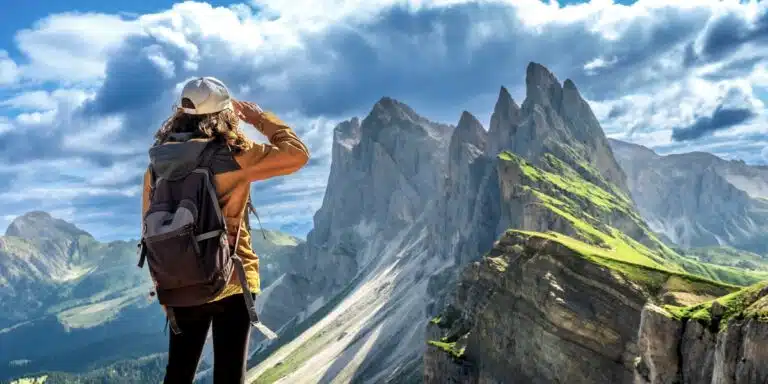
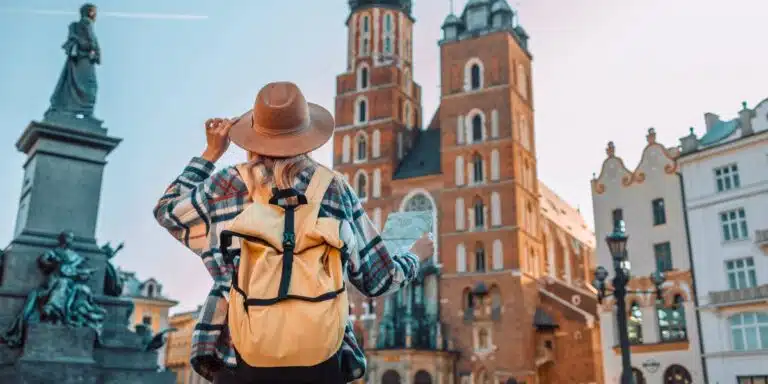

Hi MelTrekker the hike is considered moderately-difficult and it wil take you a full day. You can always take the funicular to the top though 😉 Anytime between May and September will give you great views, as long as it’s a clear day. Earlier or later and there will be mist in the valleys. Hope that helps 🙂
I visited Mount Merkur last spring and it was stunning! The trails are well-marked. I’d say it’s good for all skill levels. Early summer gives you lush landscapes and blooming nature. Highly recommend!
I was reading about the hiking spots in the Black Forest u mentioned. Mount Merkur caught my eye. looks like a cool spot. Is it suitable for beginners or is it more for the experienced hikers? Also, what’s the best time of year to hit it up for some good views?